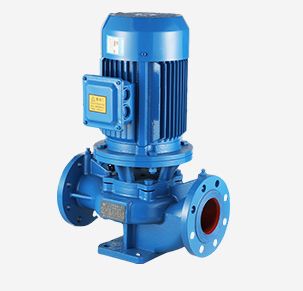English
- Afrikaans
- Albanian
- Amharic
- Arabic
- Armenian
- Azerbaijani
- Basque
- Belarusian
- Bengali
- Bosnian
- Bulgarian
- Catalan
- Cebuano
- Corsican
- Croatian
- Czech
- Danish
- Dutch
- English
- Esperanto
- Estonian
- Finnish
- French
- Frisian
- Galician
- Georgian
- German
- Greek
- Gujarati
- Haitian Creole
- hausa
- hawaiian
- Hebrew
- Hindi
- Miao
- Hungarian
- Icelandic
- igbo
- Indonesian
- irish
- Italian
- Japanese
- Javanese
- Kannada
- kazakh
- Khmer
- Rwandese
- Korean
- Kurdish
- Kyrgyz
- Lao
- Latin
- Latvian
- Lithuanian
- Luxembourgish
- Macedonian
- Malgashi
- Malay
- Malayalam
- Maltese
- Maori
- Marathi
- Mongolian
- Myanmar
- Nepali
- Norwegian
- Norwegian
- Occitan
- Pashto
- Persian
- Polish
- Portuguese
- Punjabi
- Romanian
- Russian
- Samoan
- Scottish Gaelic
- Serbian
- Sesotho
- Shona
- Sindhi
- Sinhala
- Slovak
- Slovenian
- Somali
- Spanish
- Sundanese
- Swahili
- Swedish
- Tagalog
- Tajik
- Tamil
- Tatar
- Telugu
- Thai
- Turkish
- Turkmen
- Ukrainian
- Urdu
- Uighur
- Uzbek
- Vietnamese
- Welsh
- Bantu
- Yiddish
- Yoruba
- Zulu
Telephone: +86 13120555503
Email: frank@cypump.com
Dec . 06, 2024 22:59 Back to list
Understanding the Function and Benefits of Basement Sewage Ejector Pumps
Understanding Basement Sewage Ejector Pumps A Comprehensive Guide
Basement sewage ejector pumps play a crucial role in maintaining the sanitation and functionality of homes that have below-grade bathrooms or laundry facilities. These pumps are designed to remove wastewater from basements, ensuring that sewage can be efficiently transported to the main sewer line or septic system. In this article, we will explore the importance of sewage ejector pumps, how they work, and considerations for installation and maintenance.
What is a Sewage Ejector Pump?
A sewage ejector pump is a type of submersible pump specifically engineered to handle wastewater that contains solid waste. Unlike regular sump pumps, which are used primarily for water removal, ejector pumps are tasked with moving sewage from lower levels of a building to an elevation where it can flow into the sewer system. This is particularly important for homes with basements that are situated below the municipal sewer line, preventing the risk of sewage backups and odor issues.
How Does a Sewage Ejector Pump Work?
The operation of a sewage ejector pump is fairly straightforward. When wastewater fills the holding tank, it activates a float switch that triggers the pump. The pump then pushes the contents through a discharge pipe, overcoming gravity to send the sewage upward and into the sewage system. Most ejector pumps are equipped with a grinding mechanism that pulverizes solid waste, making it easier to transport through the plumbing system.
Why You Need a Sewage Ejector Pump
If your home has a basement bathroom, laundry room, or any other plumbing fixture located below the level of the main sewer line, installing a sewage ejector pump is essential. Without it, wastewater would not be able to flow out of the basement, leading to potential health hazards, unpleasant odors, and extensive damage due to water and sewage backups. Furthermore, ejector pumps help to prevent costly repairs and restoration work in the event of a sewage overflow.
Installation Considerations
When installing a sewage ejector pump, it's essential to follow local plumbing codes and regulations. Typically, the pump needs to be placed in a sealed basin, which will collect the wastewater. The size of the basin, the type of pump, and the placement of the discharge piping are crucial factors to consider. Hiring a licensed plumber with experience in ejector pump installation is highly recommended to ensure that the system operates efficiently and safely.
basement sewage ejector pump

Maintenance Tips
Maintaining your sewage ejector pump is vital for its long-term operation. Regular inspections can help identify potential issues before they escalate. Here are some maintenance tips
1. Visual Inspection Periodically check the pump and its components for any visible signs of wear, damage, or leaks.
2. Test the Pump Regularly test the pump by filling the basin with water to ensure it activates and functions correctly.
3. Clean the Basin Remove any debris or buildup from the basin to prevent clogs and ensure efficient operation.
4. Check the Float Switch Make sure the float switch moves freely and is not obstructed by debris.
5. Professional Servicing Schedule regular maintenance checks with a professional plumber to address any technical issues.
Conclusion
Basement sewage ejector pumps are an indispensable component for homes with below-grade plumbing. By understanding how these pumps work and prioritizing their maintenance, homeowners can protect their properties from sewage-related issues and ensure a safe, sanitary environment. Investing in the right pump and professional installation will provide peace of mind and safeguard your home for years to come.
-
ISG Series Vertical Pipeline Pump - Chi Yuan Pumps Co., LTD.|Advanced Hydraulic Design&Energy-Efficient Solutions
NewsJul.30,2025
-
ISG Series Vertical Pipeline Pump - Chi Yuan Pumps Co., LTD.
NewsJul.30,2025
-
ISG Series Vertical Pipeline Pump - Chi Yuan Pumps Co., LTD.|energy-efficient fluid handling&industrial durability
NewsJul.30,2025
-
ISG Series Vertical Pipeline Pump - Chi Yuan Pumps | Advanced Engineering&Industrial Efficiency
NewsJul.30,2025
-
ISG Series Pipeline Pump - Chi Yuan Pumps | High Efficiency, Energy Saving
NewsJul.30,2025
-
ISG Series Vertical Pipeline Pump-Chi Yuan Pumps|High Efficiency&Reliable Performance
NewsJul.29,2025










